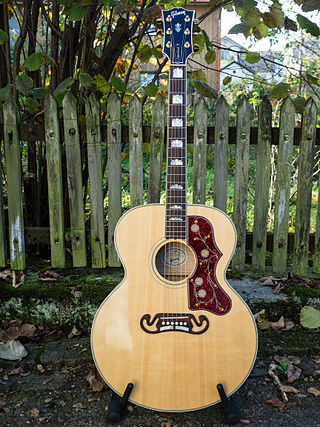
The steel-string acoustic guitar is a modern form of guitar that descends from the gut-strung Romantic guitar, but is strung with steel strings for a brighter, louder sound. Like the modern classical guitar, it is often referred to simply as an acoustic guitar, or sometimes as a folk guitar.
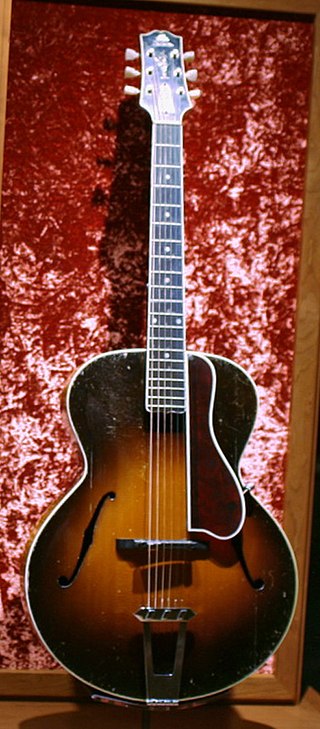
The Gibson L-5 guitar was first produced in 1923 by the Gibson Guitar Corporation, then of Kalamazoo, Michigan, under the direction of acoustical engineer and designer Lloyd Loar, and has been in production ever since. It was considered the premier guitar of the company during the big band era. It was originally offered as an acoustic instrument, with electric models not made available until the 1940s.
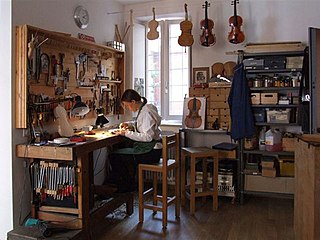
A luthier is a craftsperson who builds or repairs string instruments that have a neck and a sound box. The word "luthier" is originally French and comes from the French word for lute. The term was originally used for makers of lutes, but it came to be used already in French for makers of most bowed and plucked stringed instruments such as members of the violin family and guitars. Luthiers, however, do not make harps or pianos; these require different skills and construction methods because their strings are secured to a frame.

Orville H. Gibson was a luthier who founded the Gibson Guitar Company in Kalamazoo, Michigan in 1902, makers of guitars, mandolins and other instruments.
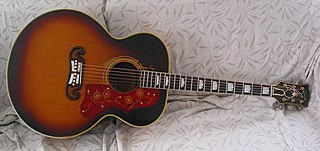
The Gibson J-200, is an acoustic guitar model produced by the Gibson Guitar Corporation.

The Gibson Hummingbird is an acoustic guitar model/series produced by the Gibson Guitar Corporation.

The Gibson J-45 is a dreadnought style acoustic guitar manufactured by the Gibson Guitar Corporation. It is generally regarded as Gibson's most famous and widely used acoustic guitar model.

Kay Musical Instrument Company was an American musical instrument manufacturer established in 1931 by namesake Henry "Kay" Kuhrmeyer and based in Chicago, Illinois. It was formed when Kuhrmeyer bought out his financial backers in the instrument manufacturer Stromberg-Voisinet. They produced guitars, mandolins, banjos, ukuleles and were known for their use of lamination in the construction of arched top instruments.
Tacoma Guitars was an American manufacturing company of musical instruments. It was founded in 1991 as a division of South Korean company Young Chang. Instruments were manufactured in Tacoma, Washington. The company and brand name were later acquired by the Fender Musical Instruments Corporation. The Tacoma plant closed, and production ceased, in 2008.

The Gibson Dove is a flattop steel-string acoustic guitar made by the Gibson Guitar Corporation since 1962.
The Gibson Advanced Jumbo was an acoustic flattop guitar made by the Gibson Guitar Corporation. Introduced in 1936, is still considered a classic. Only 300 guitars were produced before Gibson replaced it with the Gibson J-200 Super Jumbo, but these guitars are still prized by collectors and musicians today.

The dreadnought is a type of acoustic guitar body developed by American guitar manufacturer C.F. Martin & Company. The style, since copied by other guitar manufacturers, has become the most common for acoustic guitars.
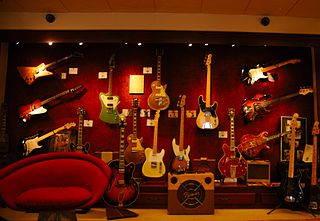
A vintage guitar is an older guitar usually sought after and maintained by avid collectors or musicians. The term may indicate either that an instrument is merely old, or that is sought after for its tonal quality, cosmetic appearance, or historical significance.

Collings Guitars is an Austin, Texas based stringed instrument manufacturer. The company was founded in 1973 by BillCollings. In addition to acoustic guitars they also make electric guitars, archtop guitars, mandolins, and ukuleles.

The Gibson Marshall Special was built in 1930 for Lilian G. Marshall, a Hawaiian guitar teacher and orchestra leader in Hartford, CT.
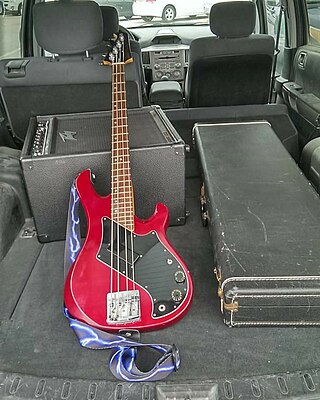
The Gibson Victory Bass was an electric bass guitar produced by Gibson Guitars from 1981 until 1986. It was a bass guitar variant of the Gibson Victory. It was not a successful model.

The Gibson ES-350T is an electric guitar model from Gibson Guitar Corporation, released in 1955. The ES-350T is a further development of the Gibson ES-350 model from 1948 and as such has a completely hollow body. The unique feature of the Gibson ES-350T at the time of its market introduction was the reduced width of the rims. As a result, the guitar has a thinner body compared to instruments with a resonance body that is of full thickness. The ES-350T, together with its sister models Gibson ES-225 TDN and Gibson Byrdland, was one of the first models of the thinline guitar type.
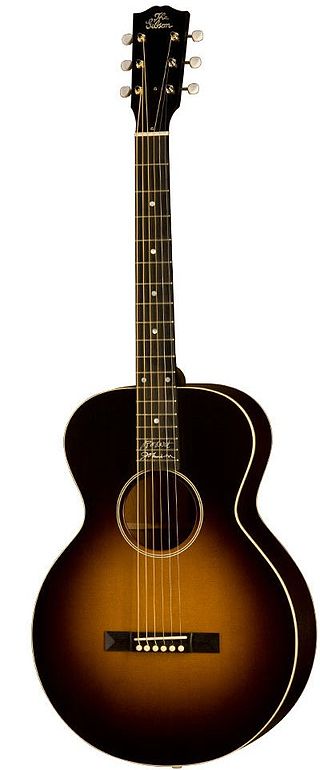
The Gibson L series is a series of small-body guitars produced and sold by Gibson Guitar Corporation in the early 20th century. The first guitars of this series, Gibson L-0 and Gibson L-1, were introduced first as arch-tops (1902), and later as flat tops in 1926. The L series was later gradually replaced by the LG series in the 1940s.

The Gibson Southern Jumbo is a flat-top acoustic guitar model originally manufactured by the Gibson Guitar Corporation between 1942 and 1978. For the first 20 years of its manufacture it was a round-shouldered instrument, which changed to square-shouldered in 1962. Several modern reissues have been created by Gibson, based on the round-shouldered version.



















